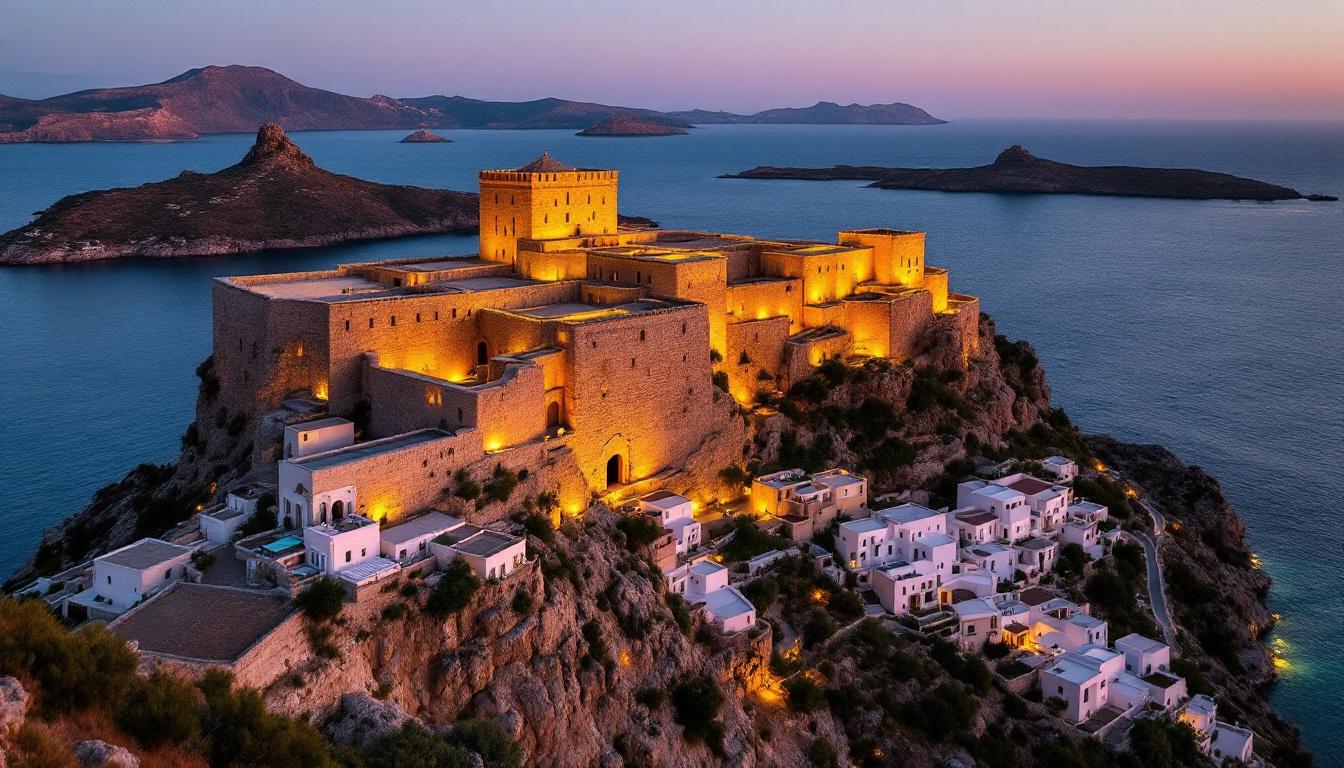Standing in the sacred cave where St. John received his apocalyptic visions nearly 2,000 years ago, I understood why Patmos remains the only Greek island where divine revelation still echoes through living stone. This tiny Dodecanese sanctuary, home to just 3,283 souls, guards Christianity’s most profound prophetic site within walls that have witnessed unbroken spiritual practice since 1088.
Unlike every other Mediterranean destination claiming religious significance, Patmos offers something genuinely irreplaceable. The Cave of the Apocalypse isn’t just a historical marker—it’s the actual location where the Book of Revelation was born, protected by a UNESCO World Heritage monastery that continues its original sacred mission today.
While millions flock to commercialized Greek islands seeking Instagram moments, this spiritual stronghold maintains its authentic purpose with quiet dignity. The Monastery of Saint John the Theologian stands as Europe’s only continuously operating 11th-century Orthodox monastery, its 15-meter walls rising like a medieval fortress above an island that chooses preservation over profit.
The sacred cave that changed Christianity forever
Where divine revelation took physical form
The Cave of the Apocalypse remains exactly as it was when St. John experienced his earth-shaking visions around 95 CE. Three distinct fissures in the rock ceiling mark where tradition says God’s voice split the stone, while a natural ledge served as the apostle’s writing desk for both his Gospel and the Book of Revelation.
Living faith preserved in volcanic stone
Daily Orthodox liturgies continue within this sacred space, performed by monks whose predecessors have maintained these rituals unchanged for nearly 1,000 years. The cave’s chapel houses precious Byzantine icons, while pilgrims from around the world come seeking the same spiritual connection that transformed Christian theology forever.
Europe’s last authentic monastery fortress
Medieval architecture with divine purpose
Built entirely from Patmos’s native volcanic stone, the Monastery of Saint John resembles a polygonal castle more than a religious complex. Its imposing battlements and defensive towers protected not just monks but also priceless manuscripts that preserved Christian scholarship through centuries of Ottoman rule and modern upheaval.
Unbroken spiritual traditions in the modern world
The monastery’s restored windmills earned the 2012 Europa Nostra award, recognizing exceptional heritage preservation among 226 European projects. Yet beyond awards lies deeper significance—this remains Greece’s only major monastery where medieval monastic life continues exactly as founder Christodoulos Latrinos intended in 1088.
The medieval village that time forgot
Chora’s Byzantine streets preserve ancient secrets
Patmos’s capital, Chora, represents one of Greece’s few settlements continuously inhabited since the 12th century. Its maze of whitewashed houses and Byzantine churches follows the original medieval plan, with narrow alleys designed to confuse invading pirates while sheltering residents within the monastery’s protective embrace.
Living heritage under careful protection
Government regulations strictly control Chora’s development, ensuring this UNESCO World Heritage site maintains its authentic character. Local families still inhabit houses their ancestors built centuries ago, while traditional crafts like Byzantine iconography continue in workshops hidden within ancient stone walls.
Pilgrimage paths beyond tourist trails
Sacred sites accessible only to respectful visitors
Beyond the main monastery, Patmos conceals dozens of smaller chapels scattered across its 34-square-kilometer landscape. The Chapel of Panagia Koumana and Prophet Elias offer profound solitude for contemplation, while hiking paths connect sites significant to St. John’s two-year exile on this remote island.
Authentic spiritual experiences in pristine nature
The island’s unspoiled beaches like Psili Ammos provide peaceful retreats for reflection, while neighboring uninhabited islets offer boat excursions to landscapes unchanged since apostolic times. Local fishermen, many descended from families serving the monastery for generations, share stories connecting past and present with remarkable continuity.
Frequently asked questions about visiting sacred Patmos
When should pilgrims visit for the most authentic experience?
Late spring through early autumn offers ideal weather for contemplative walks, while religious festivals throughout the year provide opportunities to witness ceremonies unchanged since medieval times. August brings perfect conditions for both spiritual retreat and gentle island exploration.
What preparations help visitors respect this sacred place?
Conservative dress is essential within monastery grounds, while advance booking ensures entry to the Cave of the Apocalypse during peak pilgrimage seasons. Learning about Orthodox traditions enhances appreciation for the living faith still practiced here daily.
How does Patmos differ from other Greek spiritual sites?
Unlike Mount Athos’s restricted access or other sites reduced to museums, Patmos welcomes respectful visitors to experience active monasticism and authentic Byzantine culture within a complete island community that has preserved its sacred character across nearly a millennium.
Patmos stands alone among world destinations where ancient prophecy, medieval monasticism, and living faith converge in one extraordinary place. This isn’t merely Greece’s most sacred island—it’s Christianity’s most authentic pilgrimage site, where St. John’s apocalyptic vision continues echoing through caves and cloisters that guard their secrets with humbling grace.
